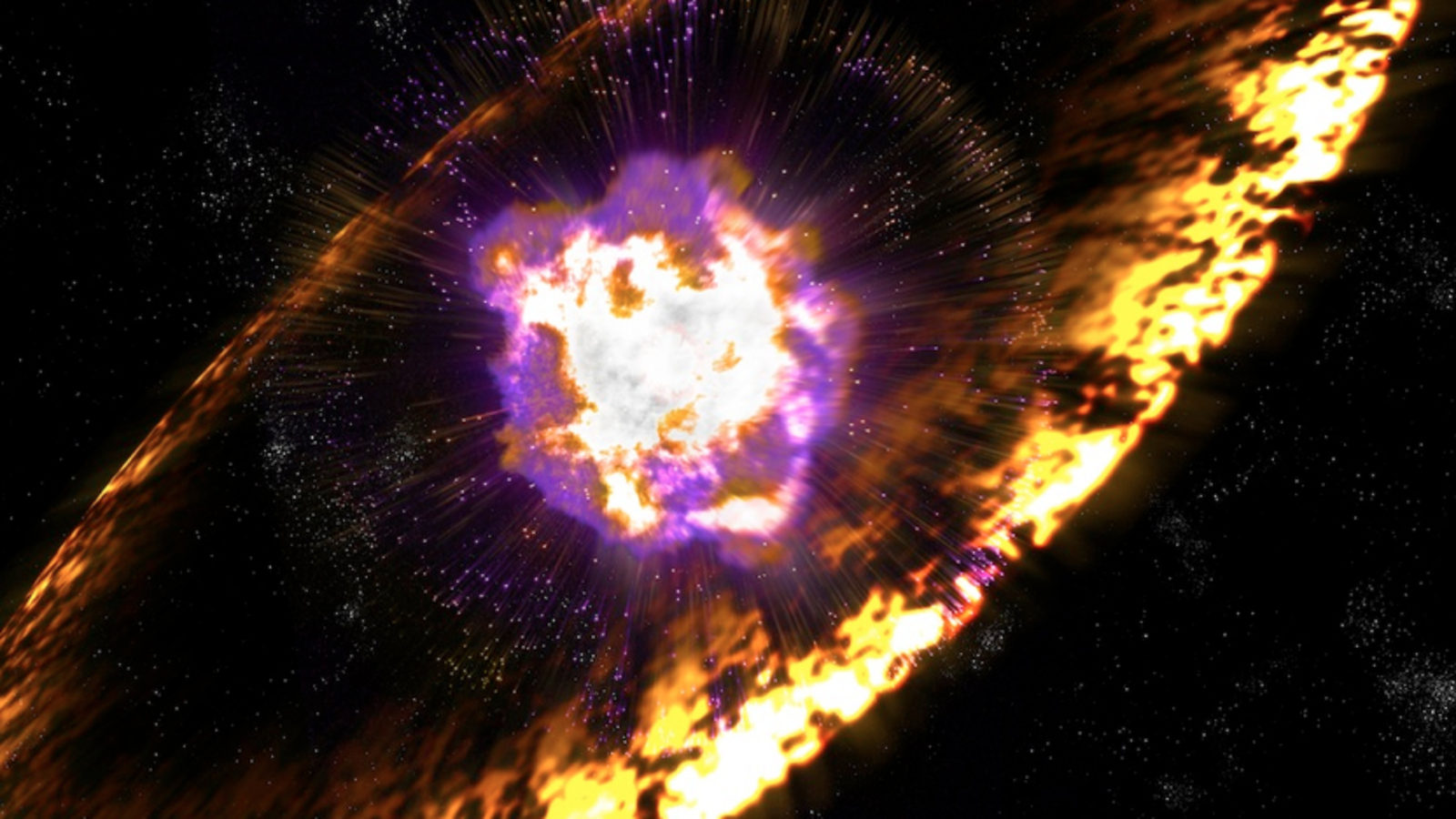For decades, researchers have watched cosmic rays, consisting mostly of energetic protons, rocket through space with incredible speed. Researchers knew these particles were likely accelerated in shockwaves created as stars violently exploded in supernovae. But they didn’t have conclusive proof, having never pinpointed exactly where in such shockwaves the particle acceleration occurred, if it did at all.
Now, researchers using the Fermi Gamma-ray Space Telescope, which views the universe from about 350 miles above the surface of Earth, have revealed evidence that the highest energy cosmic rays do indeed come from supernovae shockwaves, thanks to observations of the remainders of two stars that exploded some 5,000 to 10,000 years ago.
“Cosmic rays are incredibly energetic. The energies of these protons can go far beyond what the most powerful particle colliders on Earth can produce,” says Stefan Funk, an astrophysicist at the Kavli Institute for Particle Astrophysics and Cosmology. “Since first detection them 100 years ago, we’ve learned a lot about cosmic rays as they arrive here. We’ve even had strong suspicions and indirect observational hints about the source of their acceleration, but we haven’t had unambiguous evidence to back them up until recently.”
To obtain unambiguous evidence, Fermi observed not cosmic rays but gamma rays coming from the two supernova remnants. Direct cosmic ray observations wouldn’t do because the path of speeding protons, with their positive charge, is deflected in the magnetic fields they encounter between where they’re accelerated and where they’re ultimately observed by telescopes like Fermi. That makes tracing their path back to the source impossible.
In addition, very soon after the cosmic rays are accelerated in a shockwave, they start to interact with the gas that permeates the space between stars or get overtaken by the shockwave. In both cases, a good number of the cosmic rays’ fast-moving protons collide with the slower-moving protons that make up the gas.
Fortunately for astrophysicists, these collisions can create particles called pions, which in turn decay quickly into gamma rays—something that the Fermi researchers can measure. Unlike cosmic rays, gamma rays don’t interact with magnetic fields and so can be traced directly back to their origins.
Fermi’s gamma-ray observations revealed a large number of gamma rays radiating from the two supernovae’s shockwaves. These gamma rays showed a clear signature of the pion decay: a deficit of low-energy gamma rays compared to high-energy gamma rays.
This direct detection finally proves that cosmic rays can be produced in supernova shockwaves and accomplishes one of the space telescope’s main goals.
But it also leaves open the exact details of the acceleration process—something that Fermi researchers will continue to explore in the months and years ahead.
This research was published in the February 15 issue of Science.



